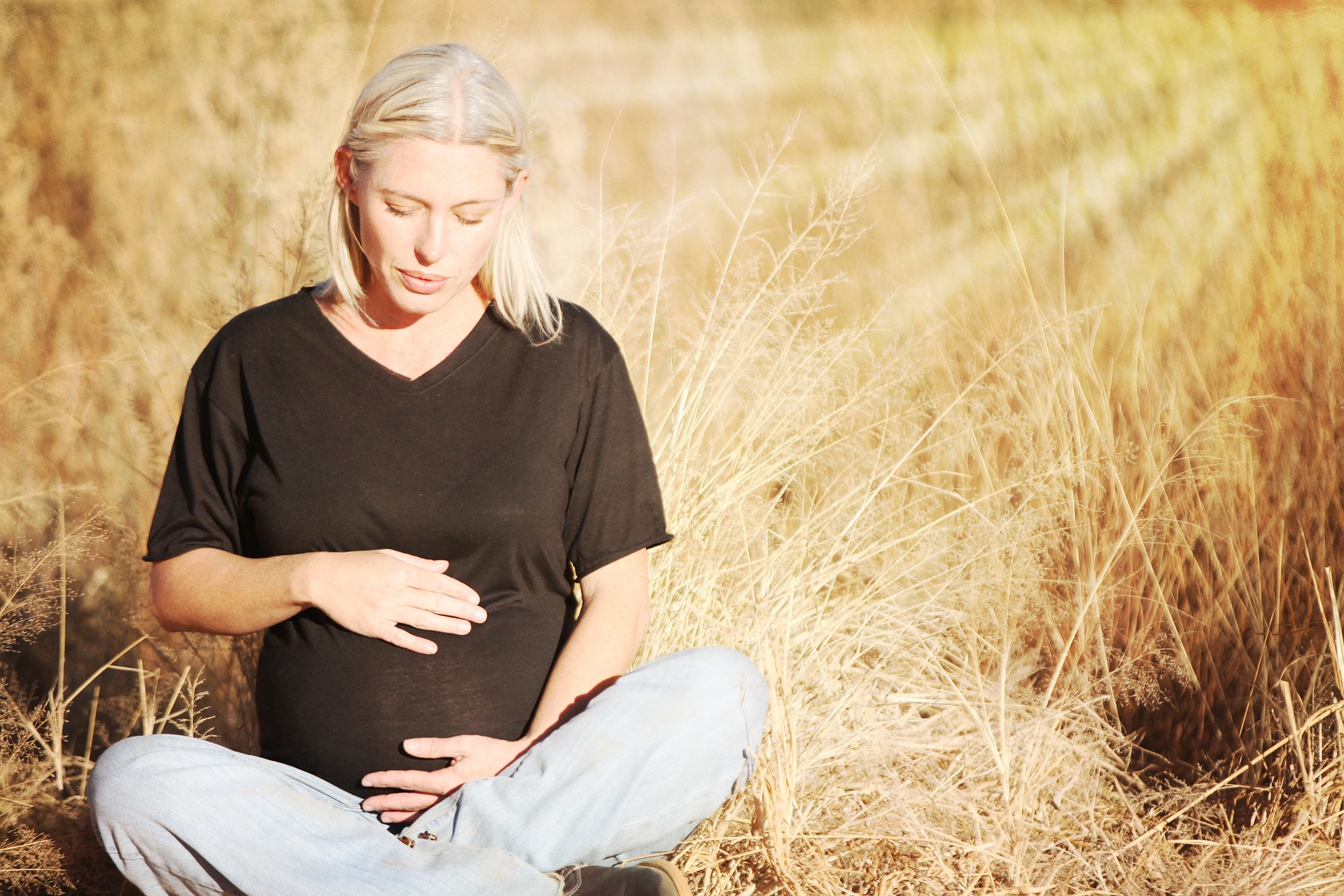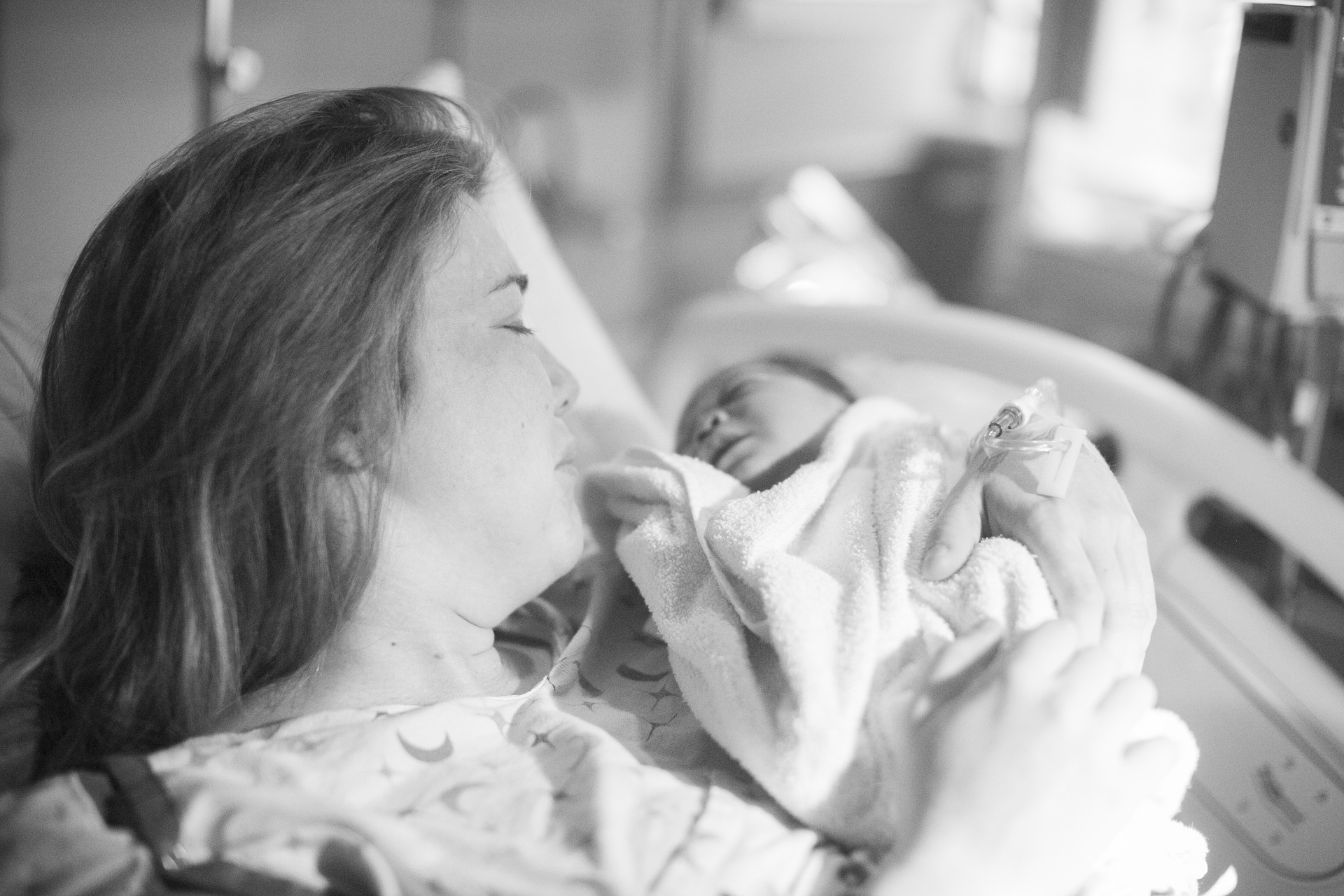Once you discover that you're pregnant, it is natural to feel curious about how your baby is developing month by month. Medically pregnancy is calculated from the first day of your last menstrual cycle (your period). These weeks or months are know as gestational.
To help you understand both your baby's development and some of the medical terminology that you may encounter, this feature looks at all stages of fetal development beginning with ovulation.

How your baby develops month by month
The ovulation stage
Ovulation happens when your ovaries release eggs (oocyes) which have developed in your ovaries' follices. Essentially a selection process is carried out to find one egg from the follicle which has become more dominant. The more dominant follicle then stops the others developing causing them to degenerate. The timing of ovulation can vary but on average it occurs around 14 days before your period.
After ovulation, the ruptured follicle will then develop into a corpeus luteum. This is a structure that secretes progesterone and oestrogen. The secreted progesterone plays the role in preparing the endometrium (the lining of your uterus) for the embryo's implantation.
When sperm enters and fertilises the oocyte by penetrating it, the protein coating of the egg prevents any other sperm entering.
At the stage of fertilisation, the genetic process is taking place. In other words, at is at this time that the genetics, including the sex of the baby, are decided. If a sperm is an X sperm then the future baby will be a girl and if the sperm is a Y sperm, then the baby will be a boy.
Human chorionic gonadotrophin (hCG)
When conception occurs there is a particular hormone that will be present, known as hCG – which is human chorionic gonadotrophin. The amount of hCG then increases each 72 hours, which means that by week three to four of pregnancy, there will be enough of this hormone present to be able to detect that the woman is pregnant. HCG is produced in the cells of the placenta.
Implanatation
The other event after fertilisation is the division of the fertilised egg. It rapidly divides into a large number of cells, staying in the fallopian tube for about three days. The term for this stage of fetal development is blastocyte. A blastocyte refers to the fertilised egg that is dividing and making its way via the fallopian tube towards the uterus.
The blastocyte has a protective covering, from which it needs to break out from at a certain stage. This should occur just before implantation. The blastocyte's objective is to make its way to the uterus and implant in the uterine lining, also known as the endometrium.
The moment the blastocyte breaks free of its protective covering and makes contact with the uterine lining, hormones are exchanged. These help the blastocyte in its mission to implant. Spotting can occur when implantation has taken place. This doesn't happen to all women, but spotting refers to a very small amount of blood. When spotting does happen, it normally takes place within the first day or two after implantation.
After successful implantation, the lining of the uterus becomes thicker and the cervix begins to be sealed with a mucus.

Blastocyte to embryo: embryo to fetus
After around three weeks, the cells of the blastocyte will have formed a ball shape. This is when it is considered an embryo. The embryo stage constinues up to 8 weeks of pregnancy. After this time, the embryo is medically known as a fetus, until the day of delivery.
How your baby develops month by month
Month 1
The amniotic sac is developing during the first gestational month. The purpose of this sac is to cushion the embryo (and later the fetus) during development. The amniotic sac is water-tight and over time becomes filled with fluid.
The placenta, which also plays a hugely important role, is developing also at this time. Its purpose is to transfer nutrients from the mother to the embryo/fetus, while it also takes away waste materials.
There is a primitive face beginning to appear. At the same time, the embryo's lower jaw, throat and mouth are growing. Circulation starts as the blood cells are undergoing development. By the end of week 4, the embryo's coronary tube has reached a beat rate of around 65 per minute.
By the end of the first gestational month, the embryo measures around a quarter of an inch.
Month 2
During the second gestational month, the neural tube is becoming well formed. Within the neural tube, the embryo's nervous system is contained, which includes the spinal cord, neural tissue and brain.
Cartilage becomes replaced by bones. During the same period, the digestive tract and sensory organs are developing. Tiny buds can be seen which over time will become the arms and legs. The early stages of development of the fingers and toes is occurring.
At this stage, the head seems quite large when compared to the rest of the embryo's body. Facial features are beginning to develop, while small folds on both sides of the head will soon become ears.
If everything is developing as it should, around the sixth week it should be possible to use ultraound to detect the embryo's heartbeat.
By the 8th week, the embryo is now medically termed a fetus and measures around one inch long.
Month 3
The ears that were folds on each side of your baby's head become fully formed ears by the end of this month. Additionally the organs and all extremities have developed. The liver is already producing bile. Even the reproductive organs are forming, although it is still a little early to be able to tell whether baby is a boy or girl. Both the circulatory and urinary systems are fully functional by the end of month three.
Toes, fingers, feet and arms will also be fully developed by the month's end. Fingernails and toenails are beginning to grow, as are your baby's teeth. All of baby's organs and extremities will be present by the end of the third month.
By the close of this month, your baby will be around four inches long. As so much important development has now taken place, the risk of miscarriage has lowered significantly, although we cannot say that it isn't present still in some cases.

Month 4
With more defined development taking place, your baby is now capable of making faces, sucking his or her thumb, yawning and stretching. Baby's features are more refined and eyebrows and eyelashes are also forming.
In month 4, baby's nervous system is starting to function. The reproductive organs and genitalia are fully formed. At this stage, assuming baby's position is good, it should be possible to tell whether your baby is a girl or boy during an ultrasound scan.
At the end of the month, baby should be around six inches long.
Month 5
During the fifth month, you may notice your baby's movements – this is because the muscles are forming. Hair is beginning to grow on baby's head. The back, temples and shoulders are covered by lanugo, a downy, soft hair. After birth, lanugo is shed during the first week of life.
When the fifth month comes to an end, baby will be around ten inches long.
Month 6
If you were to see your baby's skin at this stage, it would be red yet translucent, with the veins showing through. Baby's eyelids are separating so that the eyes are starting to open.
You may notice that your baby is able to hear sounds, as she or he may respond with movements or an increased pulse. Also, if you feel any jerking motions, it could be that your baby is having the hiccups.
From the 23rd week on, if you were to have a preterm birthy, baby has a chance to survive under the care of the intensive care team.
Now, she or he measures about twelve inches in length.
Month 7
As your baby becomes more mature, there is a reduction in the amniotic fluid. This is partially due to the fact that she/he has developed body fat reserves.
Most likely you will notice more movements, as your baby changes position more frequently. The hearing is fully functional and your baby is stimulated by sound, light and pain.
By the end of this month, baby will be fourteen inches long approximately. If you were to give birth prematurely, the chances of survival are now far greater than before.
Month 8
Baby is maturing rapidly at this stage and has developed even more fat reserves. The internal systems are fully formed, with the only exception being the lungs, which are still a little immature. Baby's hearing and sight are now fully developed also, while brain development is happening rather quickly during this stage.
By the end of the eighth month, baby should be around eighteen inches long.
Month 9
It is during this final month that the lungs become fully mature. Baby's reflexes are well developed so he/she is able to grasp, blink, respond to stimuli and move his/her head.
However you will most likely feel less movement this month, as space has become an issue. Your baby is now trying to get into position to be delivered.

























































































